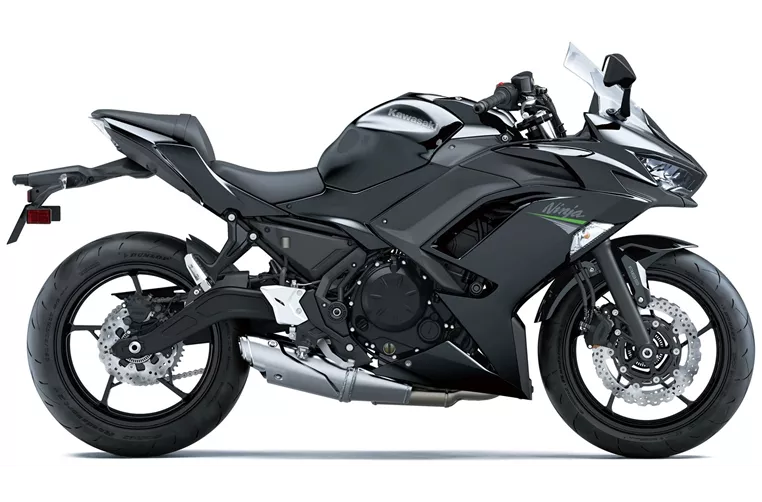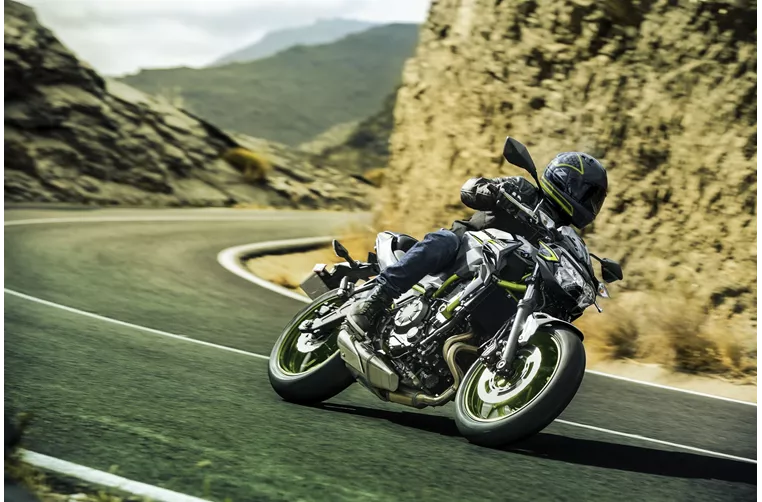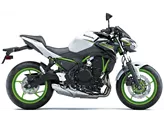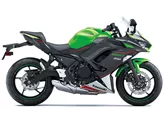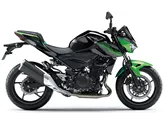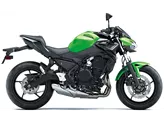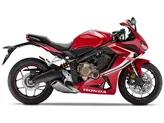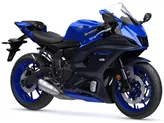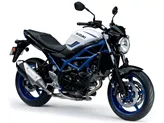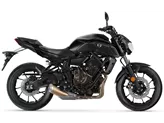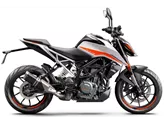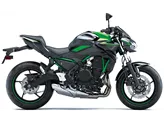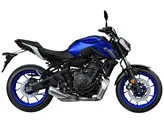Kawasaki Ninja 650 2020 vs. Kawasaki Z650 2021
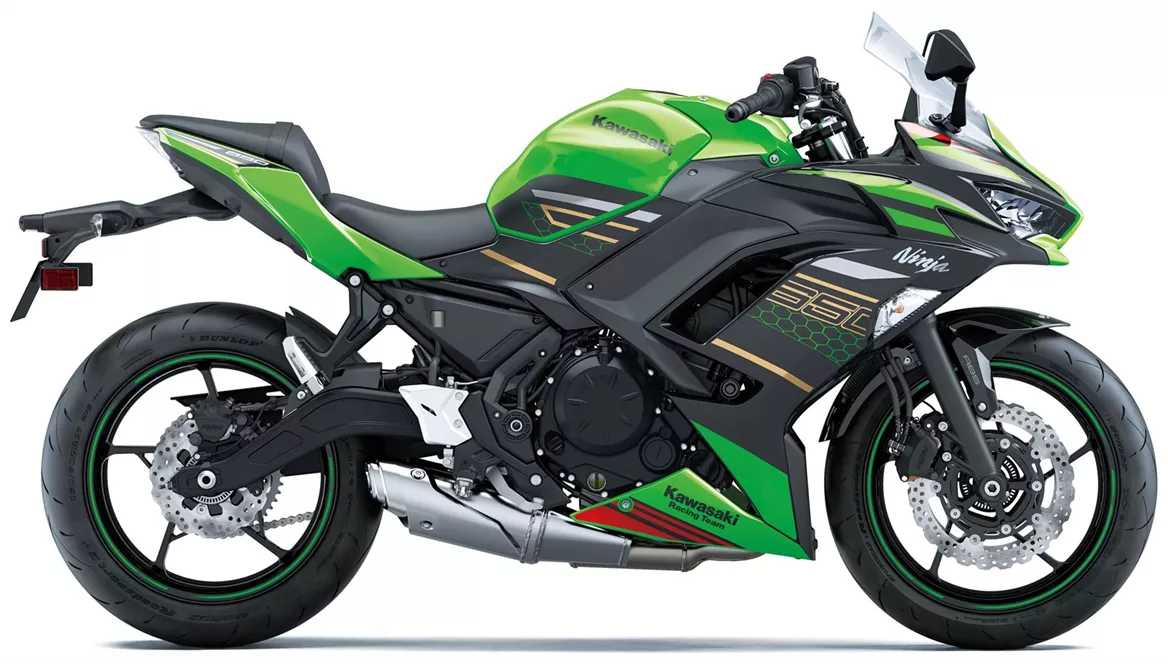
Kawasaki Ninja 650 2020

Kawasaki Z650 2021
Visão geral - Kawasaki Ninja 650 2020 vs Kawasaki Z650 2021
The Kawasaki Ninja 650 model year 2020 and the Kawasaki Z650 model year 2021 are both popular choices in the middleweight motorcycle segment. While they share many similarities in terms of technical specifications and equipment, there are some notable differences between the two models.
Starting with the strengths of the Kawasaki Ninja 650 2020, it is one of the last supersport motorcycles in its class, offering a powerful inline twin-cylinder engine. With a displacement of 649cc, it delivers a power output of 68.2 HP and a torque of 65.7 Nm. The Ninja 650 features a DOHC valve system with four valves per cylinder, providing efficient combustion and performance. The liquid-cooled engine ensures optimal temperature regulation, allowing for consistent performance.
In terms of suspension, the Ninja 650 is equipped with a telescopic fork at the front and a monoshock with preload adjustment at the rear. This setup provides a balance between comfort and sportiness, allowing for smooth handling and stability. The chassis is made of steel and has a rake angle of 65.5 degrees, providing a stable and agile ride. The braking system consists of dual disc brakes at the front with a diameter of 300mm, ensuring reliable stopping power. The Ninja 650 also features ABS, providing advanced safety assistance to the rider.
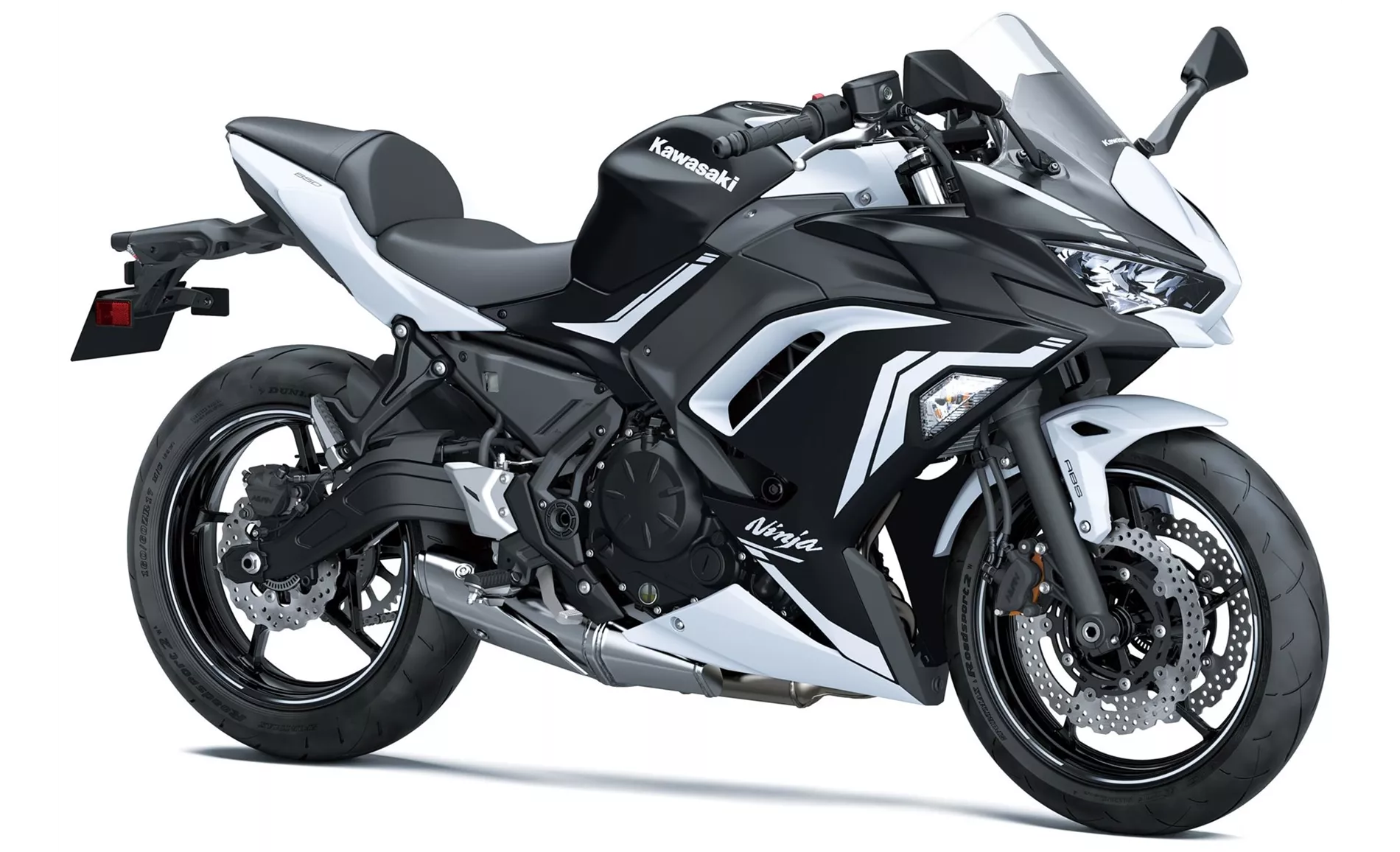
Kawasaki Ninja 650 2020
Moving on to the Kawasaki Z650 2021, it shares many of the same technical specifications as the Ninja 650. It is powered by the same inline twin-cylinder engine with a displacement of 649cc, delivering 68.2 HP of power and 65.7 Nm of torque. The Z650 also features a DOHC valve system with four valves per cylinder and liquid cooling for optimal performance.
In terms of suspension and chassis, the Z650 is equipped with a telescopic fork at the front and a monoshock with preload adjustment at the rear, similar to the Ninja 650. The steel frame provides a stable platform for the motorcycle, and the rake angle of 65.5 degrees ensures agile handling. The braking system consists of dual disc brakes at the front, providing reliable stopping power. Like the Ninja 650, the Z650 is equipped with ABS for enhanced safety.
Both the Ninja 650 and the Z650 share the same dimensions and weights. They have a front tire width of 120mm and a rear tire width of 160mm, with a diameter of 17 inches for both. The distance between the axles is 1410mm, providing stability and maneuverability. The seat height is 790mm, making it suitable for riders of different heights. The fuel tank capacity is 15 liters, allowing for decent range during rides.
In terms of equipment, both models feature LED daytime running lights, LED headlights, and a TFT display. The TFT display provides clear and detailed information to the rider, and it also offers connectivity options for added convenience.
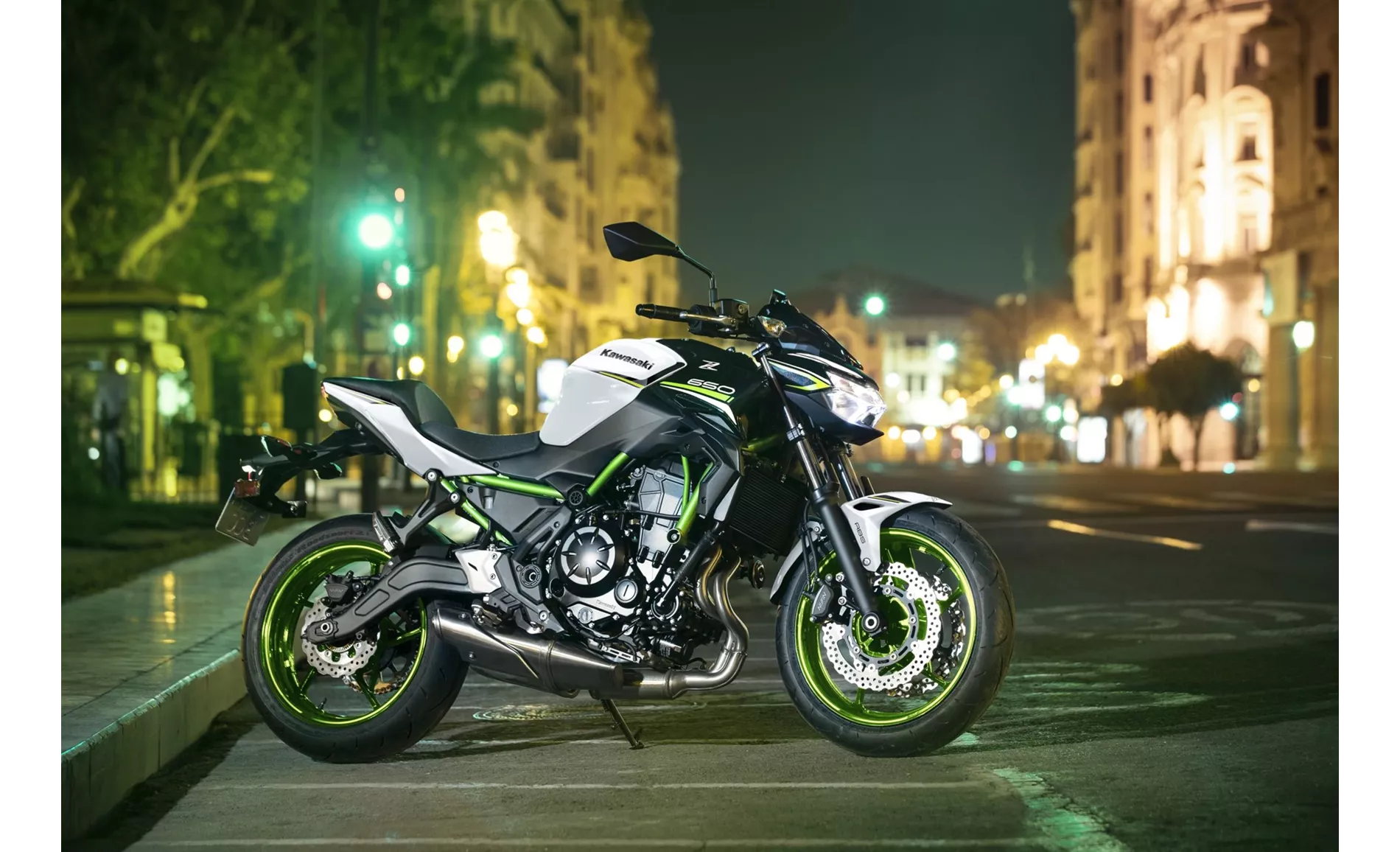
Kawasaki Z650 2021
While both the Ninja 650 and the Z650 have their strengths, they also have some weaknesses. The Ninja 650 may not be suitable for taller riders, as it can feel cramped. The brake lever pressure point may also be a concern for some riders. Additionally, the Ninja 650 may not be the best choice for two-up riding, as it may lack the necessary power and comfort for extended trips.
On the other hand, the Z650 may not be as comfortable for taller riders due to its lower seat height. It may also offer a slightly less adrenaline-inducing riding experience compared to its competition.
In conclusion, the Kawasaki Ninja 650 2020 and the Kawasaki Z650 2021 are both capable middleweight motorcycles with similar technical specifications and equipment. The Ninja 650 offers a more sporty and aggressive design, while the Z650 has a more mature and adult appearance. Ultimately, the choice between the two models will depend on the rider's preferences and intended use.
Especificações técnicas Kawasaki Ninja 650 2020 em comparação com Kawasaki Z650 2021
Prós e contras em comparação
Prós e contras em comparação
Kawasaki Ninja 650 2020
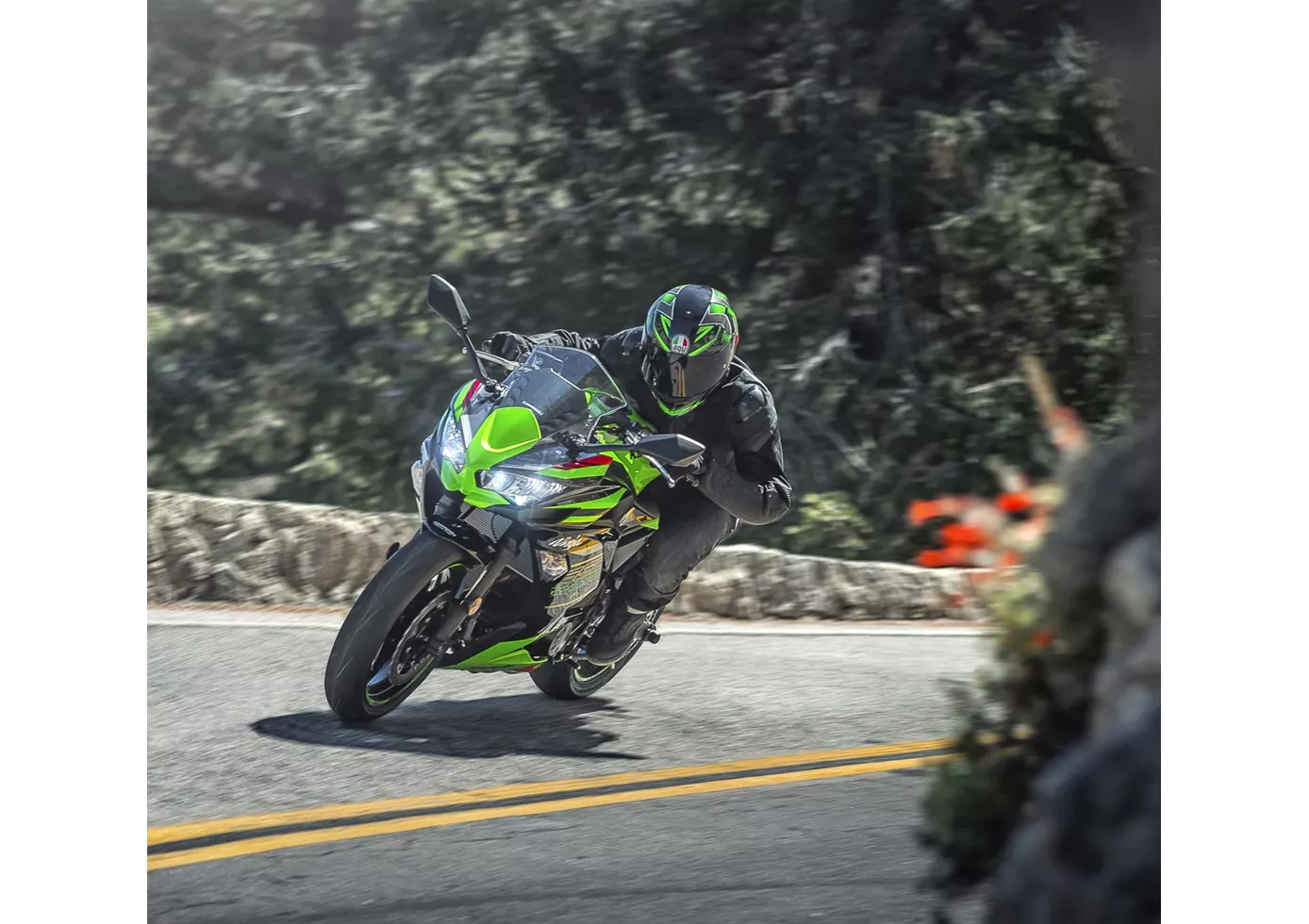
Salve a sport tourer! Com a Ninja 650, a Kawasaki criou uma representante exemplar desta classe e (espera-se) resolveu o problema da nova geração. O chassis estável e os dois cilindros decentes farão as delícias dos principiantes e dos pilotos avançados, mesmo a um ritmo mais acelerado. O travão dianteiro é um pouco bem intencionado demais, faltando-lhe um ponto de pressão transparente, apesar do bom desempenho de travagem. Outra vantagem é o ecrã TFT, que não encontramos na concorrência neste momento, bem como o aspeto adulto, que está fortemente orientado para os modelos Ninja maiores.
Kawasaki Z650 2021
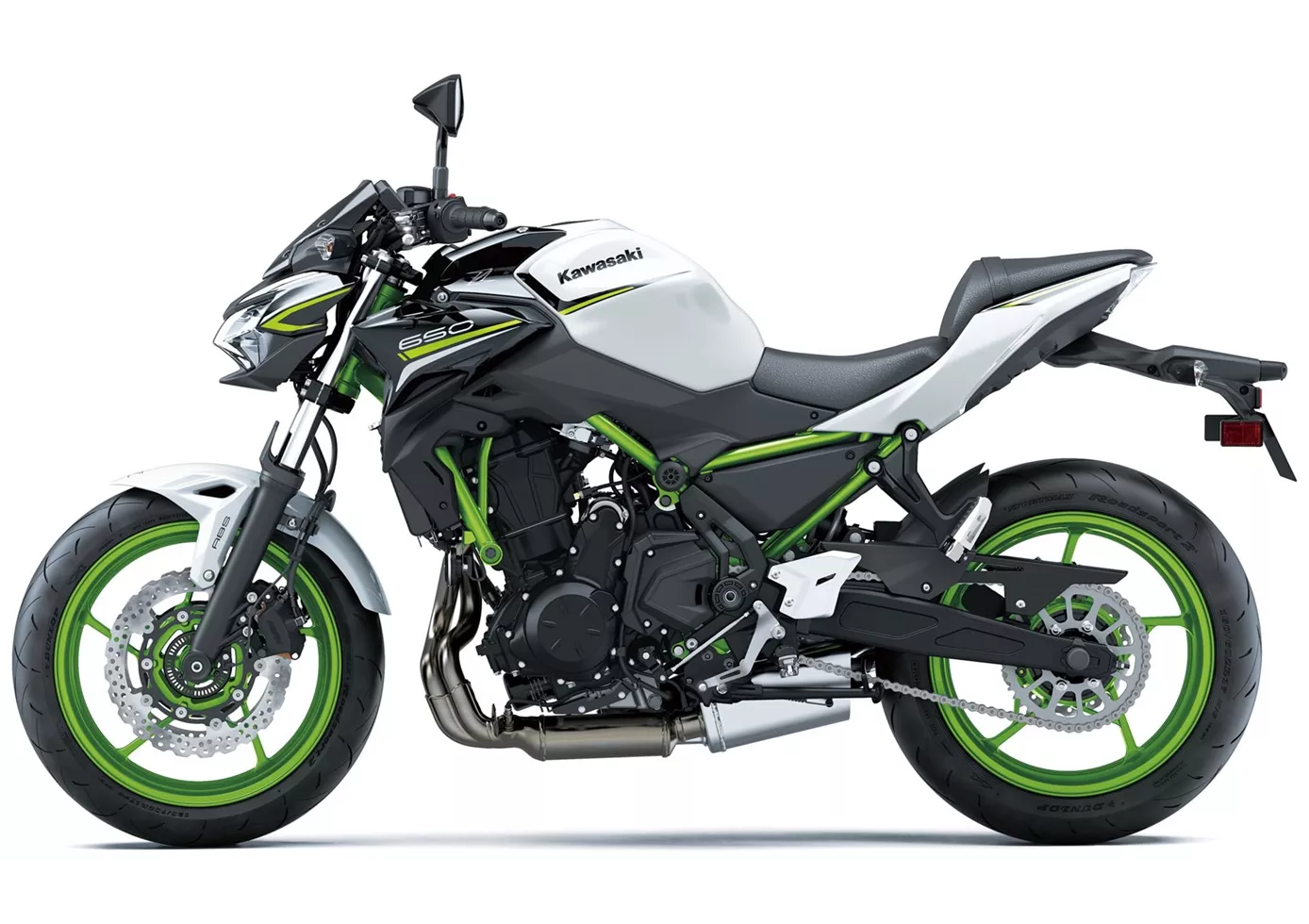
Mesmo em 2021, a Kawasaki Z 650 é sinónimo de uma condução fácil, com excelente aspeto e bom equipamento. Tanto a altura do assento como o motor são muito acessíveis e darão muito prazer tanto aos condutores experientes como aos recém-chegados. Se procura uma naked bike honesta e sem grandes surpresas, esta é a moto ideal para si. No entanto, devido às suas dimensões compactas, deve experimentá-la antes de a comprar e talvez optar pelo assento elevado.
Comparação de preços Preço médio de mercado Kawasaki Ninja 650 vs Kawasaki Z650
There are a few key differences between a Kawasaki Ninja 650 2020 and a Kawasaki Z650 2021. In terms of price, the actual average price of a Kawasaki Ninja 650 2020 is about 7% higher. Compared to Kawasaki Z650 2021 there are less Kawasaki Ninja 650 2020 bikes available on the 1000PS.de Marketplace, specifically 10 compared to 25. It takes less time to sell a Kawasaki Ninja 650 with 75 days compared to 106 days for a Kawasaki Z650. Since model year 2017 1000PS.de editors have written 20 reviews for the Kawasaki Ninja 650 and 31 reviews for the Kawasaki Z650 since model year 2017. The first review for the Kawasaki Ninja 650 was published on 04/10/2016 and now has more than 79 600 views. This compares to more than 25 000 views for the first review on Kawasaki Z650 published on 08/11/2016.
